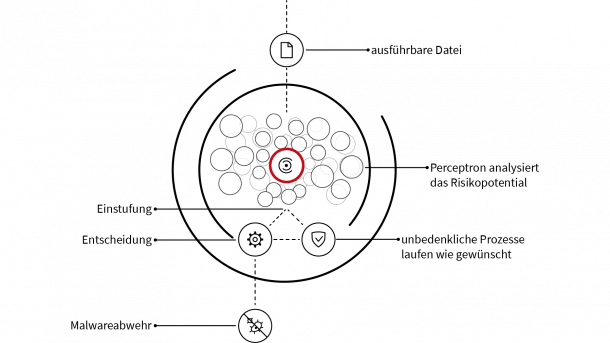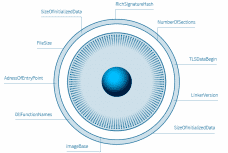DeepRay now officially unveiled by G Data:
DeepRay messes up cybercriminals
With machine learning against malware: G DATA has introduced its latest next-generation technology. DeepRay can effectively detect obfuscation of malware samples, protecting customers in real time from new threats.
G DATA introduces DeepRay.
G DATA is tackling the growing threat posed by cybercrime with a complete new development. Instead of catching malware with classic signatures, the German IT security manufacturer relies on a self-developed machine learning solution to quickly identify, identify and block rapidly changing malware in a timely, effective and resource-efficient manner.
The DeepRay technologyclassifies the possible damage files using artificial intelligence on the basis of several hundred factors and calculates a risk value for each individual executable file.
DeepRay has become necessary because the cybercrime scene has developed massively over the past few years: malicious software has become a service good. Criminals can buy specialized malicious software packages on relevant underground platforms and then distribute them. They need far less specialized knowledge than before. As a result, more and more criminals are taking advantage of these offerings, spreading more and more malware online. In addition, the malware itself is also technologically superior. Sophisticated camouflage mechanisms make detection by antivirus software difficult. Classic algorithms for finding such malware are thus severely limited in their effectiveness.
New iteration of Next-Gen technologies
The DeepRay technology complements the already extensive portfolio of
next-generation technologies in the G DATA securitysolutions . The Exploit Protection can already prevent the exploitation of security vulnerabilities in the operating system and software, the G DATA BankGuard protects users in online banking. A complete overview of all Next-Gen components can be found in this blog post.
"With DeepRay, we're changing the rules of the game and taking their economic footing for cybercriminals. Thanks to this new technology we are behind the camouflage of the malicious software and can effectively fend off fast-paced malware campaigns. Thus, we significantly improve the protection for our customers, "explains Andreas Lüning, founder and CEO of G DATA Software AG.
DeepRay is based on the more than
30 years of experience that G DATA has in the antivirus business . The expertise in analyzing and classifying malware flows directly into the training of new machine learning components. G DATA uses neural networks with multiple perceptrons to quickly and efficiently classify executables.
All in all, around 20 differently-trained machine-learning models are doing their job in the
G DATA security solution in order to ensure optimal detection of defective files using DeepRay. Executable files of various kinds (portable executables such as .exe / MSIL / .Net or VB6) are analyzed based on static indicators predefined by our analysts. The training set includes more than 150 such indicators, including the ratio of file size to executable code, the version of the compiler used, or the number of imported system functions.
20 machine-learning models in the service of customers
Using various training sets, the models analyze the processes and determine a risk value. If the file is considered potentially defective by one of the models, the machine learning technology will initiate a deeper analysis of the file. This analysis takes place in the memory of the customer. As a result, malware can not behave differently in an analytics environment to escape detection.
The DeepRay technology therefore makes it possible to detect even previously unknown malware based on specific memory characteristics.
Nor does it use cybercriminals to obfuscate their malicious code with the help of certain packers or other concealment techniques. First of all, even the use of certain packers in combination with other features can reveal an executable file as malicious. And second, the code runs at least in the main memory of the computer in plain text and can be analyzed.
However, as new malware families or new threats emerge, another learning process remains essential. For this DeepRay uses adaptive learning. The knowledge gained from the technology will be much more stable and long-term usable than single signatures or heuristic detection methods.
The advantage of the technology is obvious: it not only detects malware samples previously considered by analysts to be harmful, but also previously unknown programs. In addition, it is no longer necessary to write a separate signature for each individual recognition. With a growing data set and a long-term learning process, DeepRay's insights can effectively protect users from malware in the long run.
Source:
DeepRay versaut Cyberkriminellen das Geschäft | G DATA Blog


